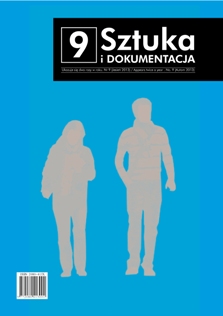Re-praktyki sztuki performance – dokumentacja, remediacja, dystrybucja sieciowa
Re-practices in Performance Art – Documentation, Remediation and Networked Distribution
Author(s): Ewa WójtowiczSubject(s): Fine Arts / Performing Arts
Published by: Akademia Sztuk Pięknych w Gdańsku
Keywords: performance i powtórzenie; re-praktyki; sztuka performance; dokumentacja; remediacja; dystrybucja sieciowa
Summary/Abstract: Performance art does not operate in isolation from the broader circulation of the networked culture. Just like any other media, the documentation of performance can be dispersed throughout the network: to be remixed or recontextualised or become the component of a mashup. The documentation of performance events in the reality of the contemporary network culture does not play a subordinate role to the event as such, since the distributive network not only disseminates information about the event, but also generates a discourse. Analysed examples include the forms of creative activity such as re-enactment, looping online video performance or intervention in the real-time documentation. There are also the new possibilities of artistic expression that come with the persona of a “code performer”. The examples of artists’ approaches include: Constant Dullaart, Ryan Trecartin, and Gazira Babeli and duos, as Eva and Franco Mattes or MTAA. The theoretical framework is based on the theory remix by Eduardo Navas, and the notion of “culture as a screenplay” introduced by Nicolas Bourriaud. It is important to apply it not only to a remediated performance understood as a work of art. Also, the continuous creation of an online identity – both in the world of the Second Life, as well as through social networking platforms – is an ongoing performance in front of potentially global audience. Re-practices within contemporary art rely on the appropriation of historical events and their continuation, which allows for the creation of a third reality of some sort. This third reality becomes a common one, within which – paradoxically – constant change is a sign of the need for preservation. As a result, the documentation material is open, being part of a game with an ever-changing system of references.
Journal: Sztuka i Dokumentacja
- Issue Year: 2013
- Issue No: 9
- Page Range: 61-68
- Page Count: 8
- Language: Polish

